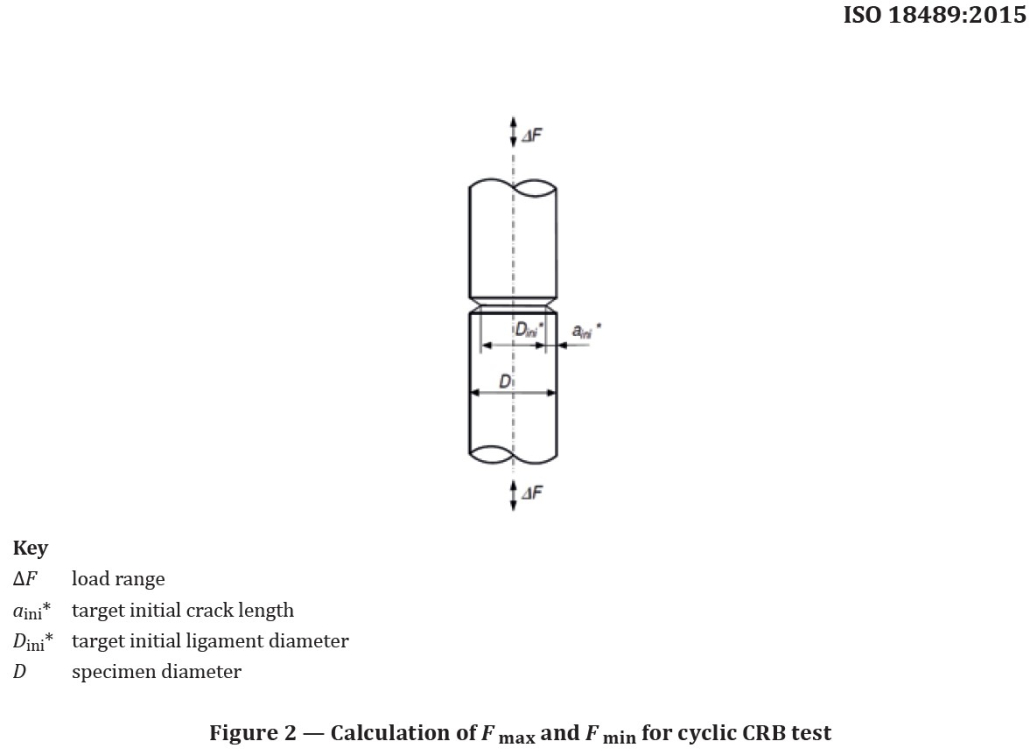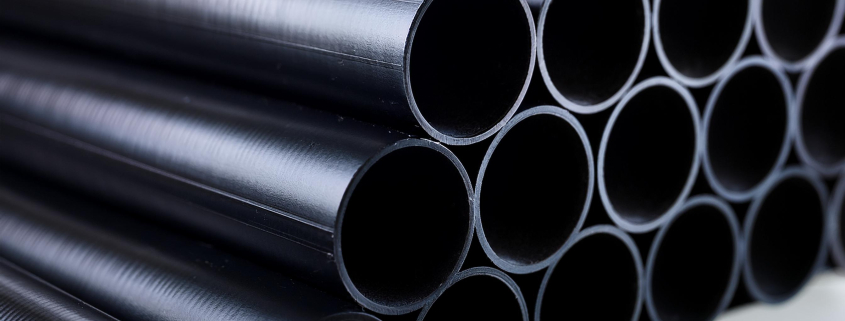New Test Requirements for Plastic Pipes (EN 12201-1): Addition of ISO 18489
1. Introduction
In recent decades, the use of plastic pipes has become increasingly prevalent in modern infrastructure due to their excellent physical and chemical properties. Traditional materials like metal have given way to lighter, corrosion-resistant, and easy-to-install solutions such as polyethylene (PE). Plastic pipes are now essential for key applications such as drinking water distribution, gas fuel transport, and pressurized sewer systems.
This article aims to present the recent updates in the regulations governing compliance tests for plastic pipes used in water distribution and pressurized sewage systems, specifically EN 12201-1, with a particular focus on the introduction of the ISO 18489:2015 standard. The objective is to highlight the importance of compliance with these standards to ensure quality and safety in the sector and how they influence the industrial landscape.
2. Main Standards for Plastic Pipes
- EN 1555-1:2021: The EN 1555-1:2021 standard pertains to plastic piping systems for the supply of gaseous fuels. It specifies general requirements for polyethylene (PE) pipes, including aspects such as material properties, dimensions, durability, and resistance to various chemical agents.
- EN 12201-1:2024: The EN 12201-1:2024 standard covers plastic piping systems used for water supply and pressurized sewer systems. This standard also outlines general requirements for polyethylene (PE) pipes, ensuring they are suitable for applications involving potable water and other pressurized fluids.
Standards are crucial for ensuring that products are safe, reliable, and of high quality. Compliance with European and international requirements ensures that plastic pipes can be used safely in various applications, maintaining high standards of safety and quality. Additionally, adherence to these standards is essential for companies that want to remain competitive in the global market.
3. Existing Test Requirements
- ISO 11173:1994: This standard describes the step method for determining the resistance of thermoplastic pipes to external impacts. The test involves subjecting a pipe to a series of controlled blows with increasing energy at each step until the point of rupture is reached.
- ISO 3127:1994: The round-the-clock method, described in this standard, is an alternative for assessing the impact resistance of pipes. This method involves continuous rotation of the pipe and the application of impacts at regular intervals, simulating more realistic usage conditions.
These tests are essential for evaluating the durability and safety of pipes. Impact resistance is a crucial characteristic, as pipes must maintain their structural integrity even when exposed to extreme conditions. The methodologies described in ISO 11173:1994 and ISO 3127:1994 provide a clear and standardized framework for conducting these tests.
4. The New Addition: Further Tests According to ISO 18489:2015
The ISO 18489:2015 standard describes the Cracked Round Bar method for determining the resistance of polyethylene (PE) materials to slow crack growth under cyclic loading. This method is crucial for assessing how PE pipes behave under repeated stress over time, similar to what they might experience in real-world conditions.
Slow crack growth is a critical phenomenon that can compromise the structural integrity of plastic pipes in the long term. Measuring resistance to this type of stress is essential for ensuring the longevity and reliability of pipes. The Cracked Round Bar method offers a precise way to evaluate this resistance, providing essential data to improve the quality of materials and finished products.
5. Implications of the New Standard
The introduction of tests according to ISO 18489:2015 represents a significant advancement for the plastic pipe sector for water distribution and pressurized sewer systems. It will enhance product reliability and safety, reduce the risk of long-term failures, and increase end-user confidence. The new standard will help establish higher quality standards, fostering innovation and continuous improvement of materials and production technologies.
Companies in the sector will need to adapt their testing and certification processes to comply with the new standard. This may involve investments in new testing equipment and personnel training. However, the long-term benefits in terms of product quality and reduced risk of failure far outweigh the initial costs. The challenges associated with implementing the standard can be addressed through strategic planning and close collaboration with industry experts.
6. Description of Required Tests
Tests to be conducted (from ISO 18489):
- The loading cycle frequency (test frequency) should not exceed 10 Hz with an accuracy of 1%. Hysteretic heating at a frequency of 10 Hz usually does not significantly influence N_f. If extraordinary hysteretic heating at the crack tip is suspected, the frequency should be reduced to 5 Hz or 1 Hz with an accuracy of 1%.
- A cylindrical bar of length L and diameter D is prepared with an extremely sharp circumferential notch with an initial crack length objective aini* at the center of the specimen, resulting in an initial ligament diameter objective Dini*.
Preferred specimen dimensions are:
- Length L: 80 mm to 100 mm;
- Diameter D: 14 mm.
The initial crack must be perpendicular to the specimen axis with an objective crack length a_ini* of 1.50 +0.15/-0.0 mm. To avoid clamping effects at the crack tip, the notch distance L_min must be at least 20 mm from the jaws. For easier clamping of the specimen, it can be fabricated, for example, with a fine metric thread M14×1.0.
According to the ISO 18489 test standard, the maximum force should be calculated with this formula:
Fmax = Dini2 π Δσ* / 4 (1 – R)
(Dini = 11mm, Δσ = 13.5 Mpa; R=0.1 <— tensile from 10% to 100% of max. load)
= 1425 N

7. STEP Lab Testing Solutions
At STEP Lab, we are at the forefront of providing testing machines capable of performing all the tests mentioned above, including those required by the new ISO 18489:2015 standard. Our machines, EA05 and UD02-UD04, are designed to ensure precision, reliability, and compliance with international standards.
With these machines, material characterization can be achieved at well-defined values of temperature, test frequency, and load ratio R.
8. Conclusions
In summary, the main standards regulating plastic pipes, EN 1555-1:2021 and EN 12201-1:2024, establish fundamental general requirements for the quality and safety of PE piping systems. Compliance tests, previously based on ISO 11173:1994 and ISO 3127:1994 standards, have been enhanced by the introduction of the new ISO 18489:2015 standard, providing an additional method for evaluating material resistance.
For more information about ISO 18489 click the link below.




